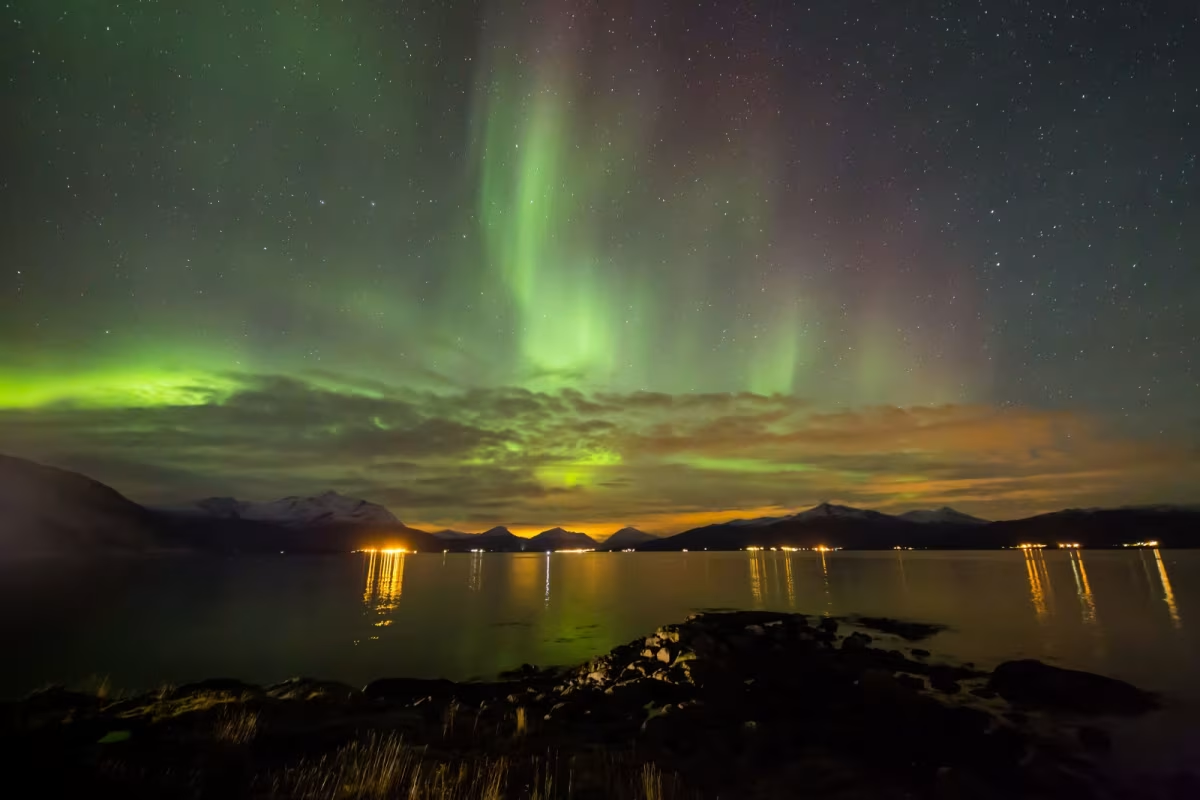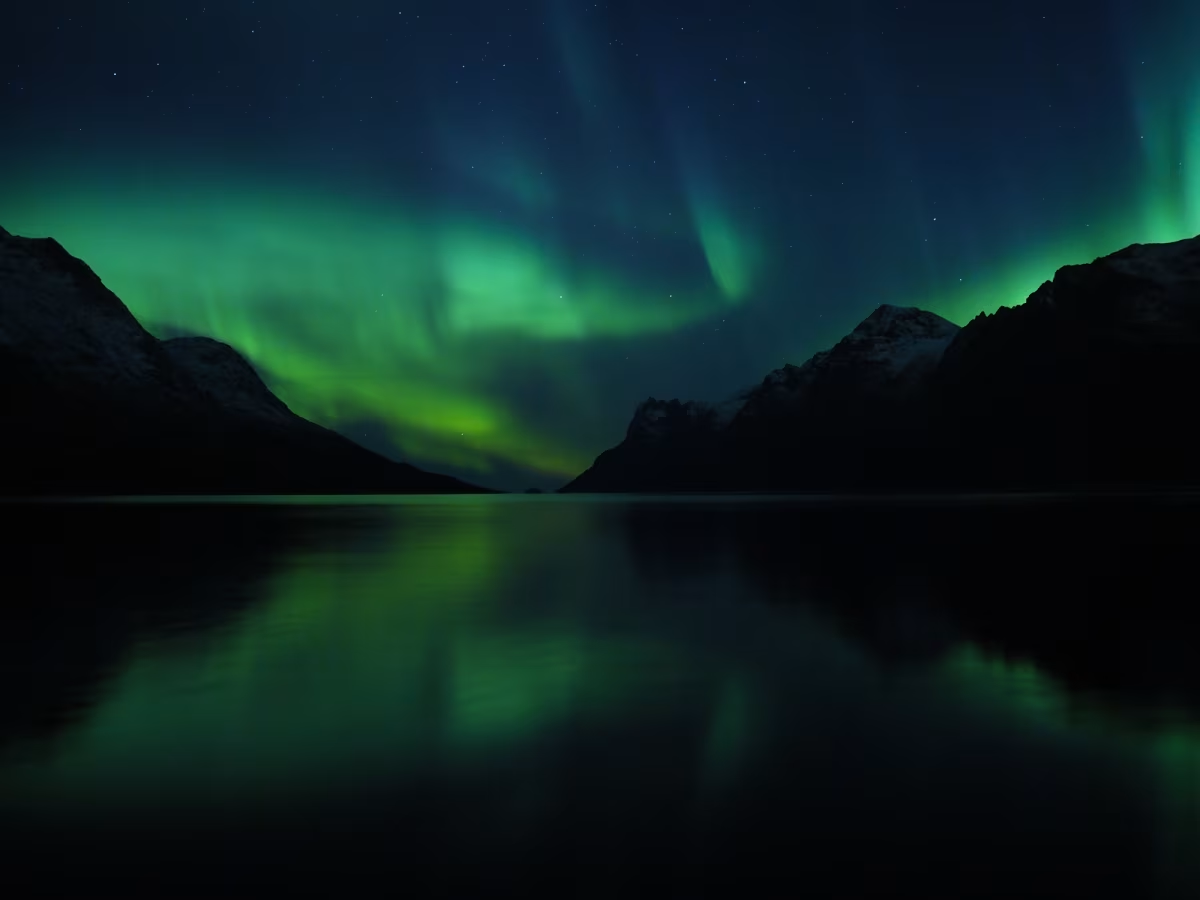10 Illuminating Facts about the Northern Lights
According to Roman mythology, Aurora was the goddess of the dawn. The word “borealis,” however, is Greek for “wind.” The combined phrase “aurora borealis” therefore means “dawn wind,” known in English as the Northern Lights. This phenomenon has fascinated peoplefor thousands of years, a fascination that clearly continues today: The northern lights are one of the major attractions of the Arctic, and indeed there are a number of Northern Lights cruises in the Arctic specifically devoted to viewing this magical lightshow.

1. The Ancients Thought the Northern Lights Were Fire
For thousands of years, no one knew exactly what the Northern Lights were or where they came from. Aristotle made the first scientific account of the lights in the 4th century BCE, likening them to flames of burning gas. In the thirteenth century CE, the first detailed attempt at explaining the lights was made in Konungs skuggsjá, or The King’s Mirror, a Norwegian educational text. The theory was that the lights were reflections from Earth’s oceans. Another theory was that they were reflected sunlight coming from below the horizon, lighting up the sky. Even fires in Greenland were speculated as being the cause of these mysterious lights.

2. An Aurora in Europe Sparked Aurora Borealis Insights
In 1708, Swedish scientist Sun Arnelius suggested that solar rays were being reflected off ice particles into the atmosphere. Eight years later, a strong aurora in Europe lead to more scientific research being conducted on what cause the lights. Sir Edmund Halley published the first detailed description of the Northern Lights, suggesting that, “Auroral rays are due to particles, which are affected by the magnetic field, the rays parallel to Earth’s magnetic field.”

3. The Northern Lights Continuously Encircle the North Pole
In the 1800s, Christopher Hansteen set up observation stations and arranged with sea captains to record the Earth’s magnetic field. Hansteen become the first person to note that the aurora occurs as a continuous ring around the geomagnetic pole. Taking this finding forward, Danish astrophysicist Sophus Tromholt organised a network of northern lights observation sites from which he discovered that the lights formed a ring around the North Pole.

4. Earth’s Magnetic Field Guides the Northern Lights
At the start of the 20th century, the Norwegian physicist Kristian Birkeland conducted an experiment in which he placed a spherical magnet inside a vacuum chamber, then shot an electron beam at it. Birkeland found that the beam was guided by the magnetic field, hitting the sphere near the poles. He then reasoned that the sun must be firing beams toward Earth, and it was Earth’s magnetic field that guided them near the poles.

5. Trapped High-Energy Solar Particles Make Up the Aurora Borealis
In the 1930s, Sydney Chapman and Vincent Ferraro hypothesised that clouds of electrically charged particles fired from the sun fly across space and envelop the Earth. Further research showed that as the particles reach Earth, they go around the atmosphere. The majority of them fly past the Earth, while a few swirl back toward it and enter the atmosphere. With the dawn of the Space Age, satellite data showed that the space around Earth is filled with high-energy particles that are trapped by the Earth’s magnetic field. Data revealed that there was also solar wind. These findings enabled scientists to create a map of the magnetosphere.

6. Northern Lights Solar Particles Move Millions of Miles Per Hour
Today we know the Northern Lights are created by solar flares that shoot through space out of the sun. Specifically the lights originate from collisions between gas molecules on the surface of the sun, releasing large quantities of matter and electromagnetic radiation. The speed at which the solar flares normally travel is around seven million miles per hour (11,265,408 kph). At this speed, the solar flares take anywhere from one to five days to reach Earth, depending on the speed of the solar wind. In comparison, sunlight takes eight minutes to reach Earth. As the solar flares reach the Earth’s atmosphere, the majority of the particles continue past Earth into space. However, a few solar flares enter the atmosphere from east to west, above the magnetic poles.

7. The Northern Lights Are Diffuse (Soft) or Discreet (Sharp)
Most auroras occur in a band called the auroral zone, which is at a 3- to 6-degree latitude from the geographical poles. The Northern Lights can be either diffuse or discrete: Diffuse auroras form a featureless glow that may not be visible to the naked eye, while discrete auroras have sharp features and can vary significantly in brightness.

8. Auroral Breakups Bring the Northern Lights to Life
The most spectacular part of watching the Northern Lights, and a common passenger wish on both Greenland cruises and Svalbard cruises around Spitsbergen, is seeing the auroral breakup. This event involves a brightening of forms and a rapid change in the aurora. The lights go from plain to rayed before swirling and dancing in the sky. In fact, multiple breakups can happen on a single night of moderate to high activity, while a low-activity night will have one or two breakups.
Scientists advise viewers to stay put if they see multiple bands appearing in an area, as that means a breakup is likely to occur. If these bands are seen early in the evening, the breakup will most likely be spectacular, with many more to come. After a big breakup occurs, there may not be any activity for half an hour to an hour, and breakups themselves can last around that long.

9. Aurora Borealis Colors Come from Gas and Electrons
The colors of the Northern Lights are dependent on gas and electrons in the atmosphere. High-energy electrons cause oxygen to emit green light, while low-energy electrons cause a red light. Nitrogen typically gives off a violet or pink color, while vertical blues are caused by electrons colliding with ionised nitrogen.
Another factor that determines the color formation is altitude. At high altitudes (over 105 miles, 170 km) reds are generated, at middle altitudes (60 – 105 miles, 95 – 170 km) green is generated, and at lower altitudes (50 – 60 miles, 80 – 95 km) pink and violet are generated. When there are large solar storms, red can occur at the lower altitudes.
The color variations are due to oxygen taking around a second to emit energy as green light, and up to two minutes to emit red light. Higher altitudes contain a greater percentage of atomic nitrogen, giving atoms plenty of time to emit red, while the pinkish colors are a result of red from oxygen and blue from nitrogen combining.

10. Practice Makes Perfect Northern Lights Pics
When taking that perfect photo of the Northern Lights, first check the weather and visit a website for aurora forecasts. A clear sky free of light pollution is as important as having the moon out of range, though some photographers prefer the moon for natural foreground lighting. Another factor is proximity to water, as an aurora over sea or lake can provide an amazing reflection.
For this type of photograph, a wide-angle zoom lens is advised. With exposure times ranging usually from 20 – 30 seconds, it is recommended that your camera be secured to a tripod. Also, try not to breathe out in awe while looking through the viewfinder, as this can cause the lens to fog and leave condensation that might later freeze. This might take some practice, but the results will be worth it.






